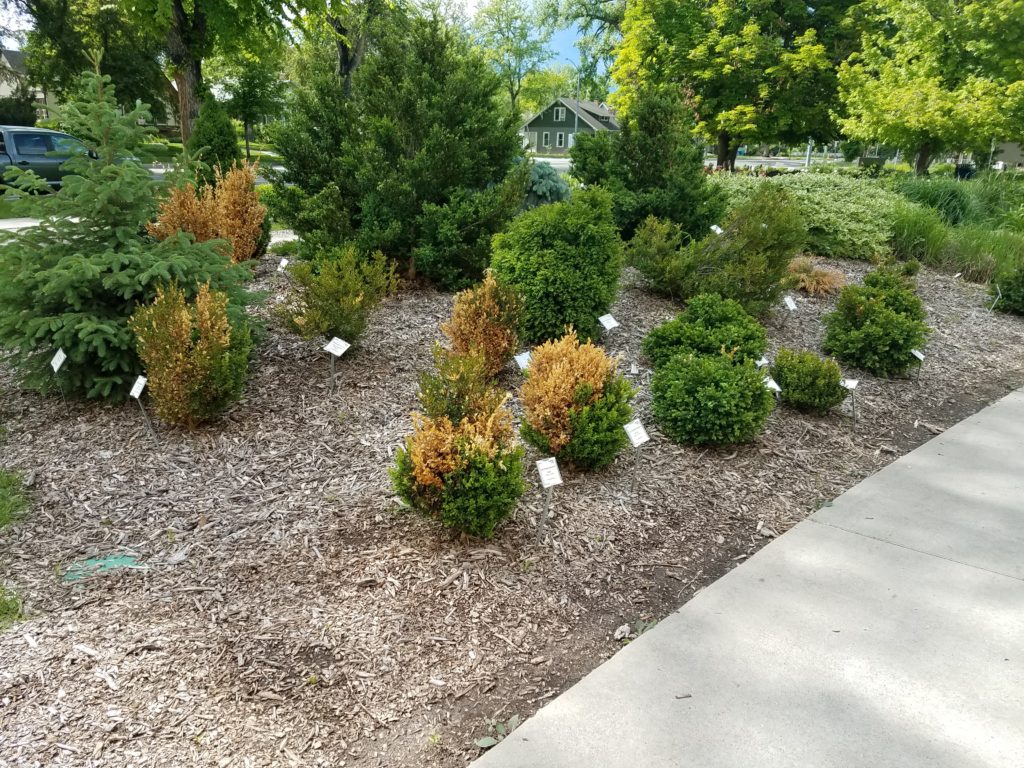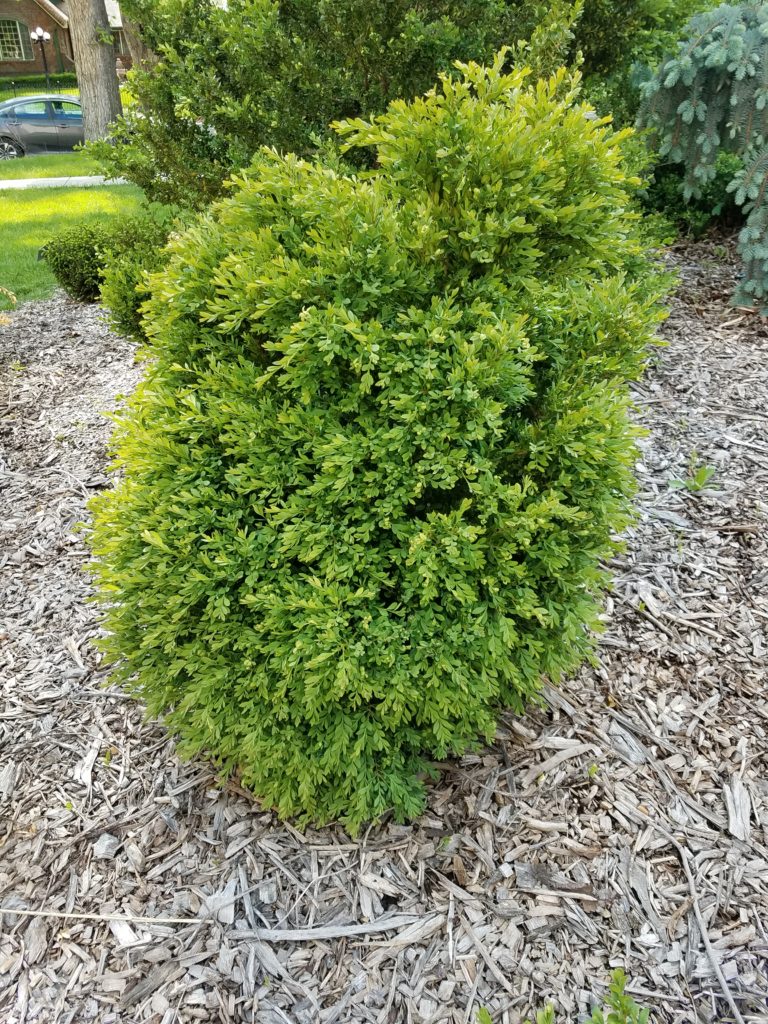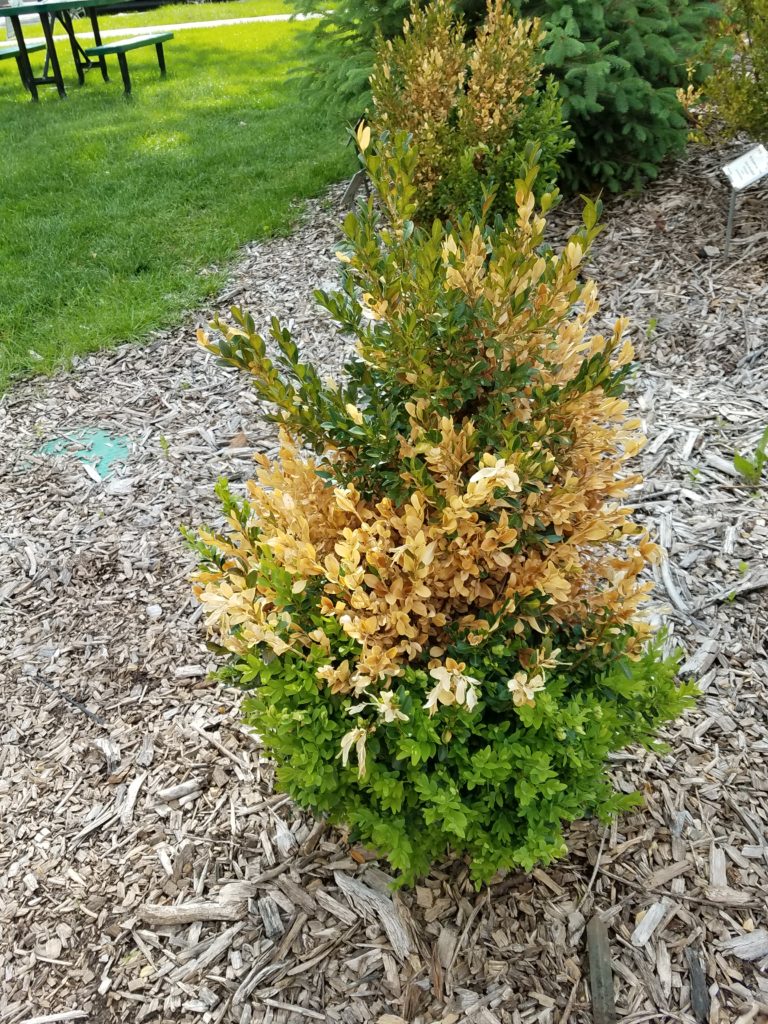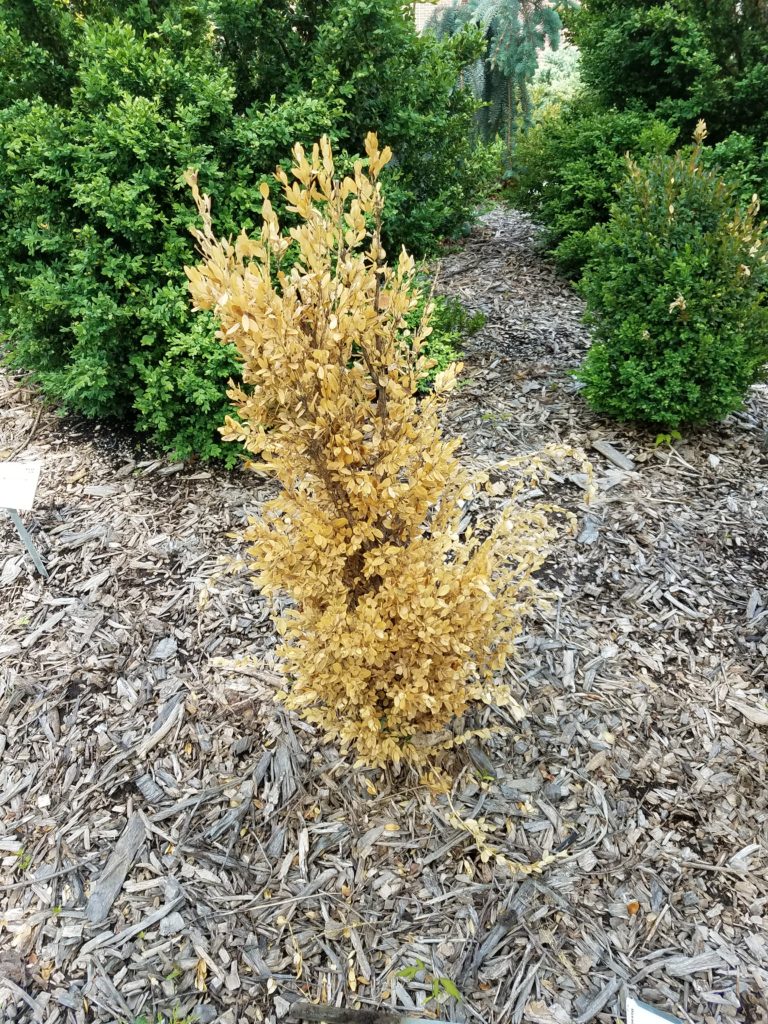
For many, boxwoods are synonymous with hedging and the parterres of many European landscapes. Generally boxwoods prefer more loamy, well-drained soils, and are often thought not the best woody plants for the Rocky Mountain/High Plains area. Root systems are near the surface and should not be disturbed. They prefer full sun to partial shade and display good deer resistance.
At Colorado State University we have been evaluating certain clones of boxwoods especially for winter hardiness. Most of the taxa we have evaluated are clones or hybrids of Buxus microphylla and Buxus sempervirens. The winter of 2020-21 was especially cold with temperatures reaching close to -20°F with little snow cover especially in February 2021. Also, during the winter of 2020-21 we did not place our usual wind screen of burlap around the collection; therefore, it was an especially good winter test.
We have about 18 different taxa of boxwoods planted in our test plots in our perennial demonstration garden located directly north of the University Center for the Arts on the Colorado State University campus at 1400 Remington Street, Fort Collins. In this research report, I would like to report on nine taxa that have either performed well over the years or have suffered some extreme winter damage.
Boxwood Trial Garden

Good Performers
Buxus ‘Julia Jane’ (var. japonica type) – Julia Jane Boxwood
This boxwood was named for the late Colorado landscape architect Jane Silverstein Ries. It has good tolerance of harsh winter conditions. The plant has a more lime-green new growth and matures to dark green. It has a more upright to square habit, and matures to about four feet tall and three to four feet wide.
Buxus microphylla ‘Gregem’PPAF – Baby GemTM Boxwood

This plant is a very compact selection with dark green color that holds color into winter.
Buxus microphylla ‘Wintergreen’ (Buxus sinica var. insularis form) – Wintergreen Boxwood

This plant has good, lighter bright green foliage that has a smaller leaf with good cold hardiness. It is a good plant for low hedges, maturing to three to four feet high and wide. Also, it can be sheared some.
A group of boxwoods that are hybrids between Buxus sinica var. insularis and Buxus sempervirens have given us good hardiness, compactness and good leaf color include the following.
- Green Gem has a more slow-growing, almost rounded habit with good green foliage color during the winter. It matures to about two to three feet high and wide.
- Green Ice® (Grazgreen’PP10,773) has good hardiness and a deep green color in winter. It has a blue-green flush of growth in spring, matures to about three to four feet tall and wide, and is also a faster grower.
- Green Velvet is slower growing with dark green leaves and good winter color. It matures to about twi feet tall and wide with a rounded growth habit.
- Green Mountain is faster growing with a more oval, pyramidal form and has good sun tolerance. It matures to about fourt to five feet tall and about three feet wide, and can bronze more in winter months.
Poorer Performers
Buxus sempervirens ‘Artic Emerald’PP18,289 – Artic Emerald Boxwood

This plant is faster growing and has more of a columnar to pyramidal growth habit and darker green foliage. It is generally taller than wide. We observed dieback on about one third of the foliage on these plants.
Buxus sempervirens ‘Monrue’PP 15,243 – Green Tower Boxwood

This plant has more of an upright, columnar growth habit with dark green foliage throughout the year. In our trials all replications browned and died in the winter of 2020-21. It could grow up to eight feet in height and would be a good plant for a narrow hedge in warmer, more protected spots.










